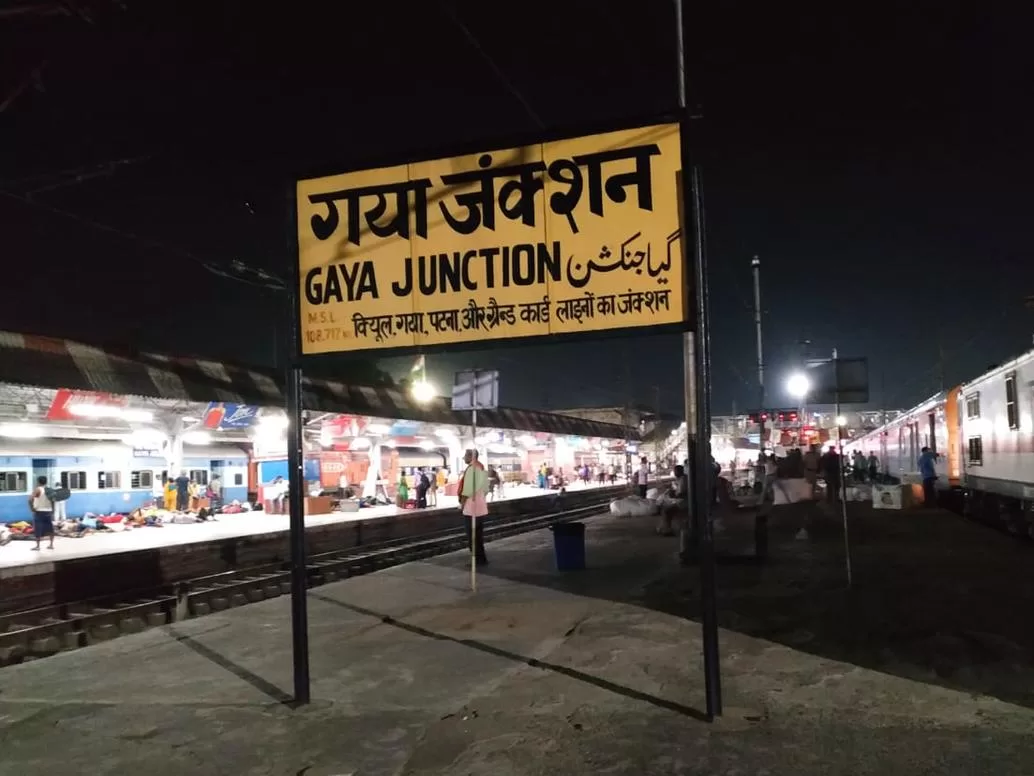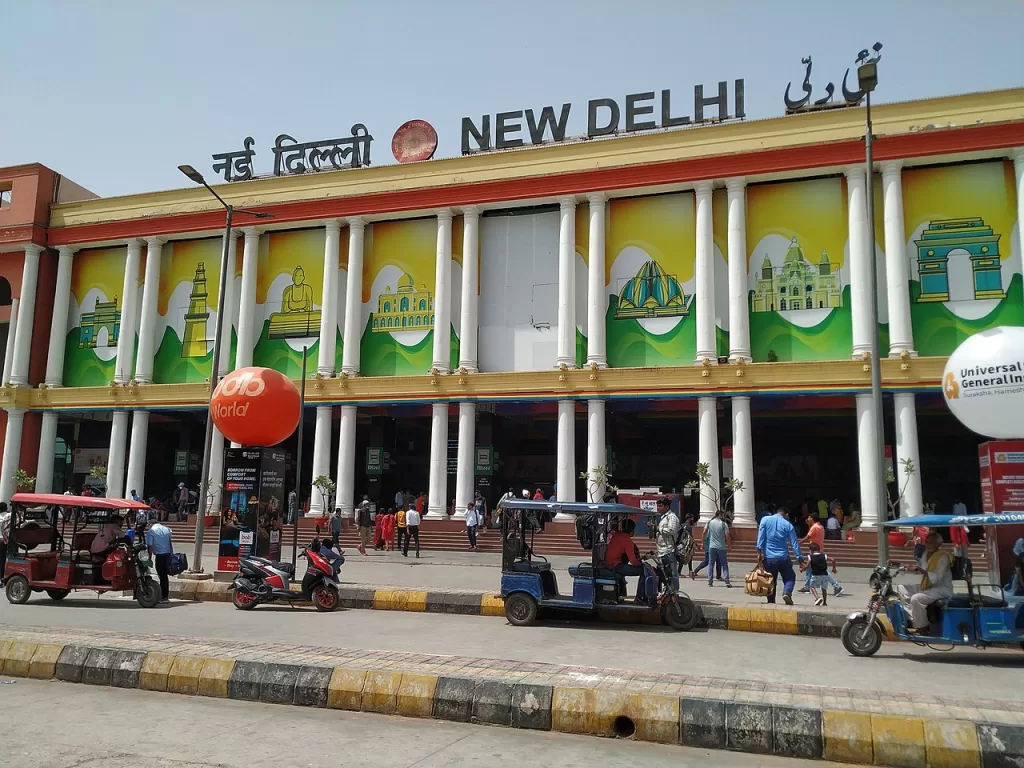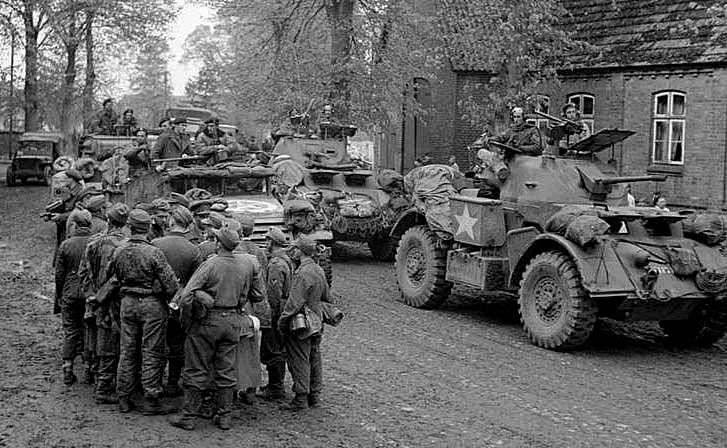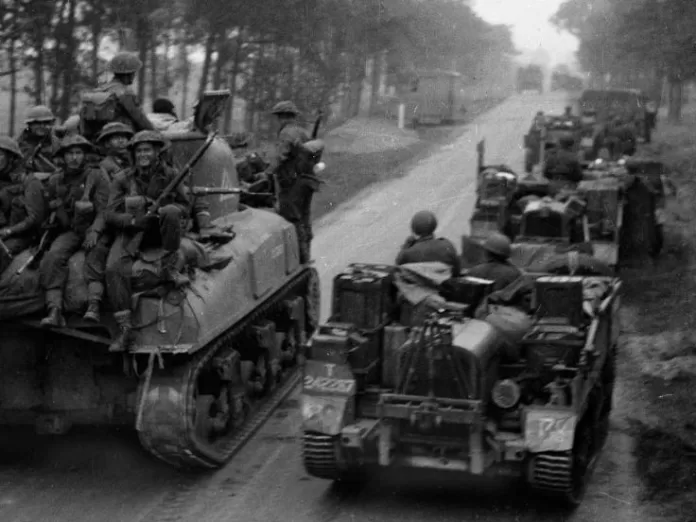Introduction
My life is full of experiences of multifarious nature events. In some of my earlier articles published in Defence Journal, I had highlighted some of these events that were strange and unbelievable, tragic and humorous as well as valorous. Today, I have picked up a few interesting events pertaining to the period from June 1945 to August 1945, for our learned readers.
Encounter with retreating Japanese troops
During 1945 in Burma, the Japanese forces had suffered crushing defeats in ARAKAN, KOHIMA, IMPHAL, TIDDAM and MEIKTILA. They had suffered horrifying casualties and losses in supplies, weapons, aircraft and ships. Their main supply routes and communication systems had been shattered. In Burma, the Japanese forces from early 1945 were retreating on all fronts. My battalion (4 Corps Recce Battalion) was mostly deployed on long range patrolling for vigorously chasing retreating Japanese. But even while retreating their rear guard troops fought valiantly with suicide resistance.
In May 1945 my battalion was emp0loyed on long range patrolling on both sides of the River IRRAWADDY from Manbu and Magwe to downstream. My Company was operating on the western bank while the battalion, less my Company, was on the eastern bank. I often led my Company with a platoon. The Company was provided with a large sized country boat which carried supplies, luggage and spare ammunition. It was operated by some locals. As and when the Company finished patrolling and cleared the area, the boat would be called to join with cooked meal.
My Company had encountered many retreating Japanese parties, inflicted casualties and captured their discarded weapons, including some guns. At THAYATMUO, about 140 miles north of RANGOON, I was sent on patrolling for the search of a Japanese arms dump reported by locals about 5 miles into a thick jungle. I, alongwith 5 men and two locals ran to the place and found two guns, a dozen machine guns and some mortars. Hurriedly I counted the booty, worked map reference of the area and location of the nearby village and returned after sunset. The information was immediately sent on. Our two Burmese interpreters called the headman of the big village (THAYATMUO) and warned him to make sure that the leftover Japanese arms would not be stolen. We were informed by the locals that the big village was ransacked for supplies by the Japanese retreating party on the previous night. The Japanese party had collected all the available boats and crossed the river 5 miles down the stream. A patrol was immediately sent but the Japanese had managed to escape.
On Leave – Special Train
The same night a message was received that leave had been opened and that I would take about 145 men proceeding on leave from the battalion by road to MAGWO airfield from where the party would be flown in a Dakota aircraft to CHITTAGONG. It was mirthful news that from the ‘Battle Field’ I was to go home on one month leave. On 3rd June 1945 the leave party was flown to Chittagong from where some 300 men of other units joined us in the transit camp. Within two days the leave party, about 450 strong, was carried by a special train on a journey over 2000 miles; the disembarking station was LAHORE. We were told the journey would take 4 days. To start with the special train ran over the meter gauge tracks, the men crossed the mighty river BRAHMAPUTRA in steamer and entrained in a broad gauge track train for onward journey. Halts were arranged for preparing tea and puri and morning and evening meals on some platform of railway stations. Dry rations for a week and cooking utensils were available in the train.
Famous Railway Stations
We crossed the famous suspension bridge over the river HOOGLY (GANGES) and arrived at HOWRAH (CALCUTTA) for a six hour halt to entrain another special train. During 1660 the British forces, due to superior Navy, occupied KALCHATA town situated on the bank of the river HOOGLY and a big village called GOBINDPUR. In the beginning of the 17th century KALCHATA swelled into a big trade centre and was called CALCUTTA, whereas GOBINDPUR was converted into a fort, later called Fort WILLIAM. Calcutta was the first capital of British India, but was shifted to DELHI in 1911 by Lord CURZON. The buildings were constructed in the south of old Delhi in RAISENA hills during 1913. As there was sufficient time, the Indian officers went to see the famous film DEVDAS (of BURWA and JUMANA), later enacted by DILIP KUMAR and a few years back by SHAHRUKH KHAN.
The train picked up speed and reached ASANSOL, well known for coal mines, for a halt. ALGAYA, a few hours halt was made for meals. In the GAYA jungle the great BUDDHA sat in prayers under a banyan tree for a long time in search of revelation. During October 1943 I had accompanied a draft dispatched from 2nd Punjab Regiment Centre for 7/2 Punjab Regt deployed in ARAKAN against the Japanese; the battalion was part of 7th Indian Division. At GAYA we had spent a few days in the transit camp. I accompanied a Hindu officer for visiting an old temple of BUDDHA which possessed s stone depicting the right foot of the great BUDDHA. The Piyaries were filling the footprint with milk and offering to the visitors but we had left the place hurriedly to avoid drinking the milk in which Piyaries were dripping their arms up to their elbows!

At GAYA railway station I went to see the cooking of meals by our men near the train engine. Suddenly I saw on the opposite platform, my course mate Lieut SUBHA SADIQ sitting on a bench. I shouted out his name and upon seeing me, he shouted back in surprise. We warmly embraced each other. He had come to GAYA transit camp from the battle field serving with 5/1 Punjab (now 4 Punjab) under 26 Division in ARAKAN-RAMREE island. 5/1 Punjab was raised in 1788 and in 1799 it participated in the 3rd Battle of MYSORE (SERINGAPATAM) against TIPU SULTAN. The booty included some precious silver pieces which are in possession of the Officers Mess. The Battle Honours if SERINGAPATAM is inscribed on the Battalion Regimental Flag. Lieut SUBHA SADIQ was also proceeding on leave to his home town GUJRAT. He was the grandson of the famous GUJRAT saint, SAIN KANVAWALA. He was waiting for the Express train to take him up to LAHORE. With the permission of the OC Train, he was allowed to travel in the special train. Our friendship had developed in OTS MHOW and continued with undiminished affection. His matchless sincerity and integrity were strong points of his character. Our friendship was further cemented when my elder son NOKHEZ was married to his youngest daughter, ZAREEN. His good humour was so infectious that everyone present would roar with laughter. Alas! He is no more in this world. May ALLAH bless his soul in heaven.
Our next halt was BENARAS, famous for its dawn when the rays of the sun keep on twinkling for some time on the river’s surface; this scene was most fascinating. BENARES is also famous for its Langra mangoes, pan and bangles. From Benares the train turned towards MIRZAPUR because a ‘line clear’ on the main track was not available, MIRZAPUR was famous for the carpet industry and for its longest railway platform in India.
The train halted at ALLAHABAD, famous for guava fruit and the home town of India’s NEHRU family. It is the junction of the rivers JAMANA and the GANGES. FATEHPUR (old name ASINI) was the next halt. CAWNPUR (old name MUNJ) was the halt for meals. It was famous for numerous mills and factories. KANUJ was the next halt for morning tea; this was a very old town famous for numerous PAN shops. We stopped for a few minutes at ALIGARH (famous for its Muslim University) and from thee halted at BULLUNDSHARE – the great historian ZIAUDDIN BURNEY belonged to this town. Residents of the street known as BURN, in BULLUNDSHARE, call themselves BURNEY.
The next halt was at MEERUT (famous for firing the first shot by the freedom fighters in uniform during the War of Independence 1857, it was the home of the 2nd Punjab Regiment, the second senior most of the British Indian Army called the Golden Galley. From MEERUT the next stop was at SAHARANPUR (known for its grafted mangoes) and then at AMBALA (the Regiment Centre of 15 Punjab and an important Air Force station). The train passed LUDHIANA without halting. It was known as the minor MANCHESTER because of its flourishing cottage industry producing fine cloth (cotton and silk). After the first AFGHAN War, some Afghan princes were banished to Ludhiana and their descendants accepted it as their homeland; were paid pension by the British Indian Government.
The next halt for morning meal was at JULLUNDER where the Regiment Center of 17 Dogra Regiment was located. The train guard was informed that the train should reach LAHORE by 1200 hours and enroute no halt would be made. We passed AMRITSAR (well known for the Golden Temple of the Sikh community) and by 1200 hours we reached Lahore, where the Railway Traffic officer took over the documents and the train. Within a few hours the men proceeded to their home railway stations. I also caught a passenger train for FEROZEPORE. My sudden arrival was a pleasant surprise for my family members.

Adjutant General – Gen DEEDES
After one month’s leave I was required to join my battalion in BURMA. I booked my seat for DELHI in the Punjab Mail and after two days at DELHI I was to travel by train to HOWRAH. I entrained and was lucky to be allotted a coupe by a railway official whom I paid Rs. 2/= as Inam. At FARIDKOT the seat of the FARIDKOT State ruled by a Sikh Raja, the train stopped. Suddenly I heard knocking at the door, I look out and saw in dim light of the platform, a British officer and few Sikh officers in uniform. The conductor guard was also standing, I opened the door. The British officer, a general in uniform, politely said, “Young man, sorry to disturb you I have been allotted the coupe but before you vacate we will find a suitable seat for you.” I alighted, stood to attention as I was wearing night suit. The guard searched his register and found an upper berth in a first class compartment. My luggage was shifted by the coolies of the station. Next morning at Delhi railway station I found that he was the Adjutant General (most probably General DEEDES) of the British Indian Army who at the invitation of the ruler of FARIDKOT had gone to spend a couple of days for shikar.
A False Prophet
At Delhi I stayed for two days with a colleague of my father living in KAROBAGH. One evening he took me to a house situated a few blocks away. There lived a strange character who had declared himself a ‘Messenger of God’. We were welcomed y his KHALIFA, who made us sit in a well furnished room. The walls were decorated with framed certificates from various famous dignitaries. Soon a middle aged well-built man appeared who was introduced as ‘SAFFIR ALLAH’ (Ambassador of Allah) who claimed to be a messenger of Allah. During conversation he disclosed that the angels of Allah often visited him because he was a messenger – SAFFIR ALLAH. We kept listening to his ludicrous falsehood but did not ask any question or refuted him (on his own he showed us a grain of rice on which the whole of SURAH FATEHA was written which could be read with magnifying glass. On end of the grain was fixed on a few inches long glass tube which was kept in a glass cover. He also produced a number of letters of thanks from the King Emperor GEORGE VI, the Viceroy, field Marshal WAVEL, some Nawabs and Maharajas to whom he had presented grain of rice on which their respective names, decorations and titles were written. He had received cash awards from the dignitaries. We commended his skilful art but left murmuring to ourselves – a false prophet, a mad man, a glib orator who deserved to be hatefully denounced like the false QADIANI prophet.
A Mughal Prince
The business of my host was being looked after by his manager SHAH ALAM, a handsome man of about 30 years. I was very impressed with his cordial but dignified behaviour. His manners were also proof that he possessed hereditary qualities of high class. According to my host, SHAH ALAM was working on the Delhi Railway Station when my host, impressed with his honesty and pleasing behaviour, engaged him as a sales manager and paid him Rs. 50/- as pay which he said was much more than what he deserved being a matriculate. I was told his great grand father was a first cousin of the King BAHADAR SHAH ZAFAR. During the fighting of 1857 he was hanged by the British whereas his 12 years old son was saved by the palace gardener who kept him hidden in his house for some years.
The gardener had a beautiful sister who worked as a domestic servant in the palace. A prince developed relations with her and she gave birth to a daughter, but the mother died when the child was a few months old. She was brought up by the gardener’s wife. She was 6 years old when the gardener had brought the prince to his house. The prince started working as assistant gardener in the house of a British railway officer, but soon raised him to work as an office boy. Both the prince and the niece of the palace gardener were married when the prince was about 20 years old. SHAH ALAM told me that there were many Mughal princes and princesses (some had been kidnapped by the palace servants).
To Battle Field
After two stay I caught a mail train for HOWRAH, reported my arrival to the RTO who dispatched me to DUM DUM transit camp. DUM DUM was a famous airfield. On 17 July 1945 I, with 30 men, was flown to PEGU, a big town and railway station about 30 miles north of RANGOON. HQ 7Division was located there. Soon I and 10 men of my battalion were dispatched in a vehicle which dropped us about 6 miles south of PEGU. It was raining because the rainy season was in full swing. I was posted as the Mortar officer. About 5 miles east of PEGU, artillery firing could be heard and I was told that the enemy parties, mostly coming from ARAKAN, were trying to cross the river SITTANG about 20 miles east of PEGU town. It was reported that enemy was trying to cross the main road between TOUNGOO and PEGU, being the shortest route for reaching the SITTANG river crossing places. From PEGU the river was about 30 miles, whereas from TOUNGOO it was also about 30 miles in the east. Heavy fighting was in progress all along the river because the enemy was trying to establish a safe zone for the rear parties and stragglers withdrawing in haste from ARAKAN. My battalion was responsible to guard the PEGU-RANGOON road for about 5 miles. The battalion HQs and one rifle company were located in a school building situation on one side of the road.
A track was coming from the PEGU YOMMAS (thick jungle) and joined the main road. I was sent on a fighting-and-ambush patrol into the jungle for blocking the track and inflicting casualties. The visibility even during daytime was poor. Mosquitoes were swarming around, biting us and kept us alert and awake. We applied anti-mosquito oil over our naked skin. On the ground, in stagnant water leeches were trying to suck our blood but salt was sprinkled to ward off their movements toward us. We had gone about 4 miles deep into the jungle and halted at a track junction. I deployed my force of 15 men and waited anxiously for the enemy. The constant buzzing of mosquitoes all around us was deeply annoying.
It soon started drizzling and branches of trees and some sleeveless raincoats (only 8) provided us some protection. Most of us were completely drenched. By 0400 hours no enemy party had appeared so we returned with engaging in any clash, to the HQs. Next morning some locals told us that a Japanese party had taken a different route, they had thrown away their heavy weapons and passed through a nullah under a railway bridge. The area was searched and two machine guns, a mortar and a couple of bags were recovered. One bag contained some documents which were sent to the Division HQs. In one document, the map reference and name of villages as rendezvous points were mentioned on the bank of the river SITTANG. The breaking out routes for the Japanese 55 Division were marked. The area was shelled by our long range artillery guns and bombarded by bombers.
Late in July 1945 it became necessary to undertake a brigade operation to clear the BEND (SITANG river) area when the enemy began to show signs of becoming aggressive, this operation was the last fight bigger than a battalion action fought by 33 Brigade (7 Division). The Japanese had established themselves at the ford on the eastern side of the bend near the village PANAYO. A rifle company of 7/2 Punjab, with Mortar Platoon was in support. From the end of July and the beginning of August 1945 the battle continued for 3 weeks, even when it was raining, without cessation and it was estimated that in trying to escape into SIAM (THAILAND), some 11000 Japanese were killed in the SITTANG bend alone. On 15th August the Japanese surrendered.

To enjoy the peaceful surrounding I went out on the road to watch the rush of military vehicles on both sides. Suddenly I saw two Jeeps stopping in front of the battalion HQs. The acting 4 Corps Commander (Lieut General Sir FRANCIS KBE CD DSO OBE – later GOC-in-Chief Eastern Command India, author of the famous book ‘While Memory Serves’) was driving the jeep. I saluted, he shook hands and asked my name and then told me to inform the CO of his arrival.
After many postponements the battalion was finally ordered on 10th October to concentrate at MINGALA DON to prepare for a journey by air to SIAM (THAILAND). The battalion activities in SIAM will be covered in a future article.
Conclusion
In this article I have tried to narrate facts from my memory and also sought help from books that are mentioned below. The train journey was fascinating and interesting. Enroute we saw lush green fields, jungle clad hillocks covered with floating clouds, at places on the horizon, a rainbow appeared and made our hearts leap with joy. We had crossed mighty rivers, minor rivers and numerous streams. To inculcate interest I have mentioned some historical facts also and highlighted importance of some places. For 4 days we were on the railway track, covered 2000 miles, my longest train journey!
Bibliography
- The Golden Galley History of 2 Punjab Regt – Lieut Col Sir Geoffrey.
- Golden Arrow – the Story of the 7th Division, Brig M.R. Robert
- Defeat into Victory – General Slim
- Report to the Combined Chiefs of Staff – 1943, 1945 – Vice Marshal Mountbatten




